OslobreenOslobreen is a remote c. 35 km long valley glacier, whose source lies in the vicinity of Newtontoppen (1717 m), Svalbard’s highest peak, in Ny Friesland, NE Spitsbergen. It flows east then northeast, joining the larger Hinlopenbreen in its lower reaches, then terminating in the sea at Hinlopenstretet. The images shown here were taken by MH in August 2010 on and around the flat-topped peak of Ditlovtoppen (c. 660 m), where Oslobreen is joined by a substantial tributary known as Blårevbreen. The middle and upper reaches of Oslobreen, and neighbouring Polarisbreen as well as other glaciers in this area are close to being at their Little Ice Age limits, but near the coast substantial recession has taken place. This contrasts with the west coast glaciers where recession has been much greater. The area is noted for its surge-type glaciers, although there is little indication that Polarisbreen itself is surge-type (Photos M. Hambrey, August 2010). |
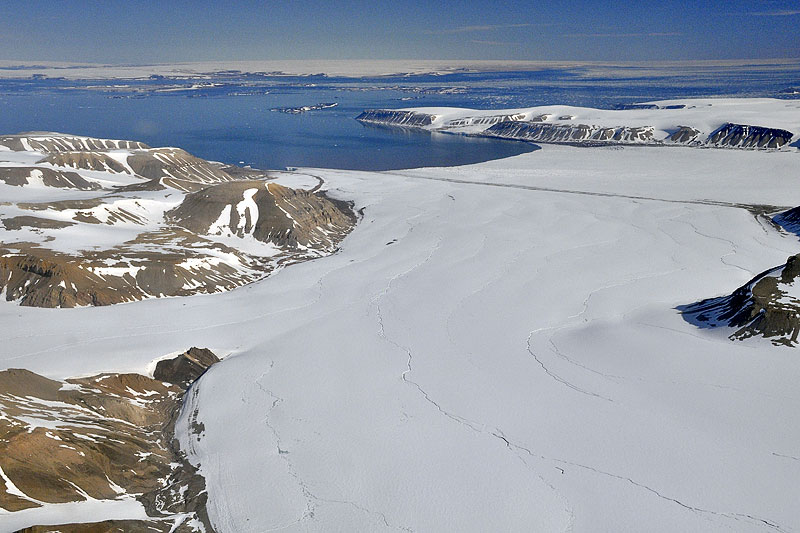 Aerial view of lower Oslobreen, looking towards its confluence with Hinlopenbreen. The large ice-capped island of Nordaustlandet is in the background (MH). | 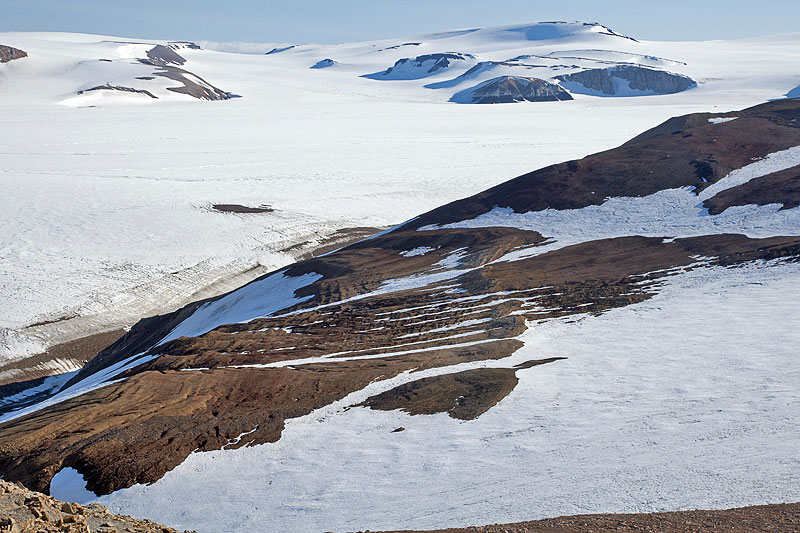 View across upper-mid Oslobreen to Andromedafjellet and Perseusisen from Ditlovtoppen (MH). | 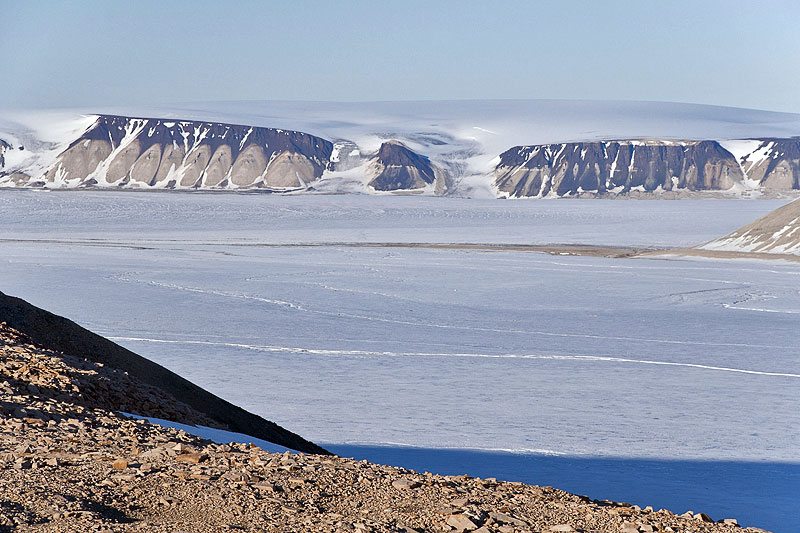 Lower Oslobreen and Hinlopenbreen with intervening medial moraine. Dolerite cliffs of Rykatsjevfjella beyond (MH). | 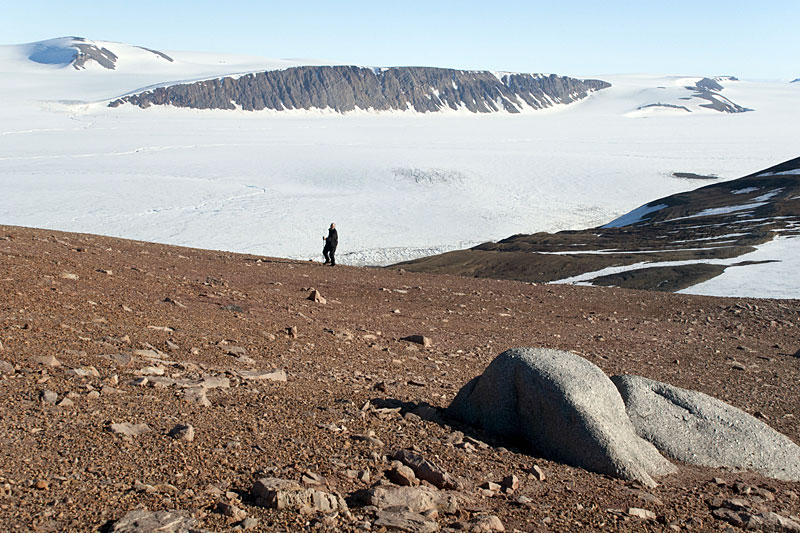 Middle reaches of Oslobreen and the Cambrian-Ordovician rocks of Kirtonryggen beyond (MH). |
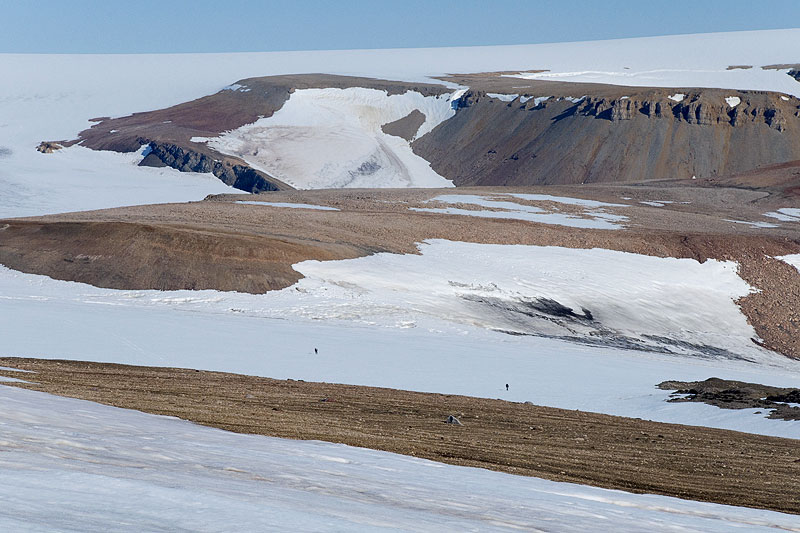 A small un-named tributary glacier to Oslobreen on Sillhøgda, with two geologists for scale (MH). | 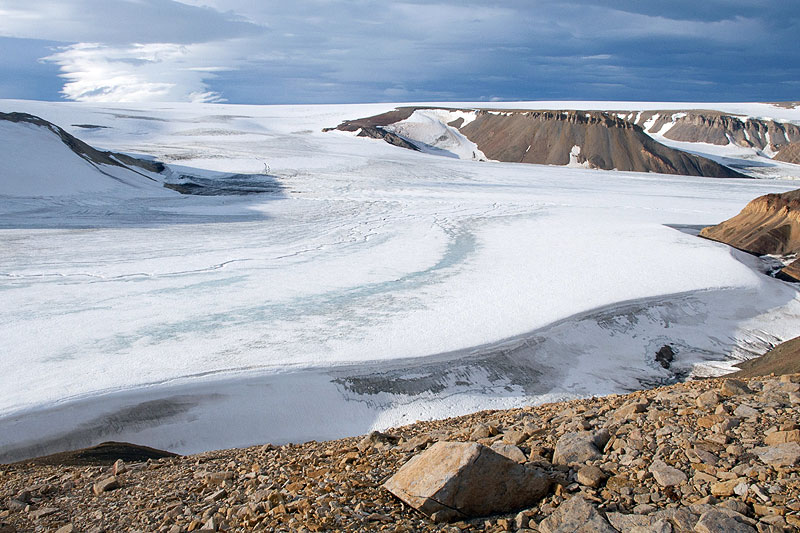 Blårevbreen, a major tributary of lower Oslobreen, during a spell of föhn winds which induced heavy melting at its surface. (MH). | 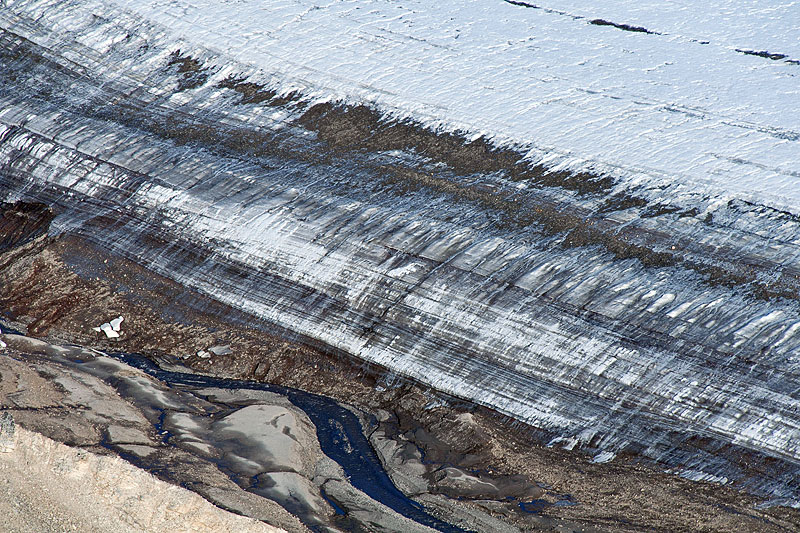 Looking down on ice-marginal foliation and folding in Oslobreen from the top of Ditlovtoppen (MH). | 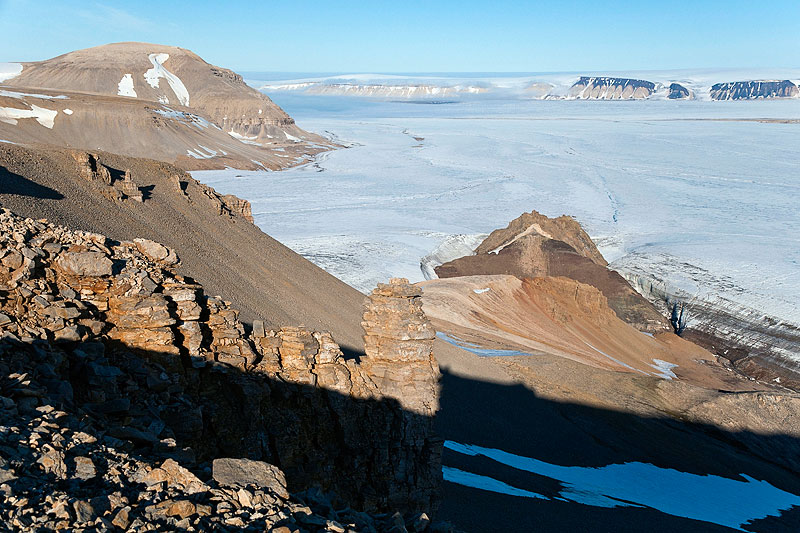 Carboniferous limestone crags overlooking the small twin Cambrian-Ordovician peaks of Topiggane below, the site of a former ice-dammed lake, and the lower reaches of Oslobreen (MH). |
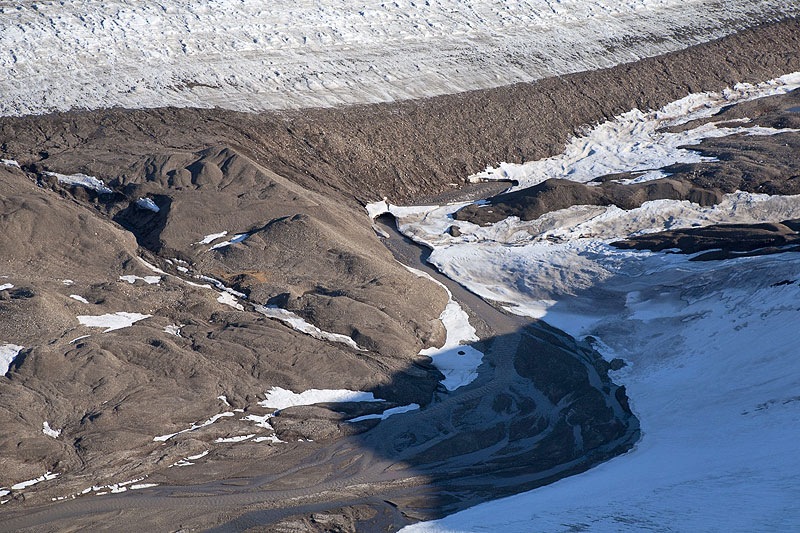 Englacial stream emerging temporarily from beneath the left-lateral moraine of Oslobreen, viewed from Ditlovtoppen (MH). | 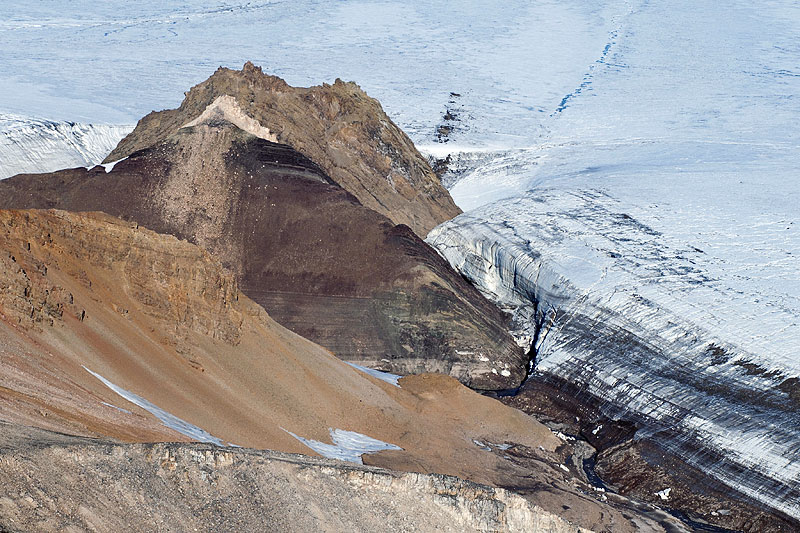 Telephoto of Topiggane and the site of the former ice-dammed lake. The stream in the previous photo flows along the glacier margin and re-enters the glacier at this point (MH). | 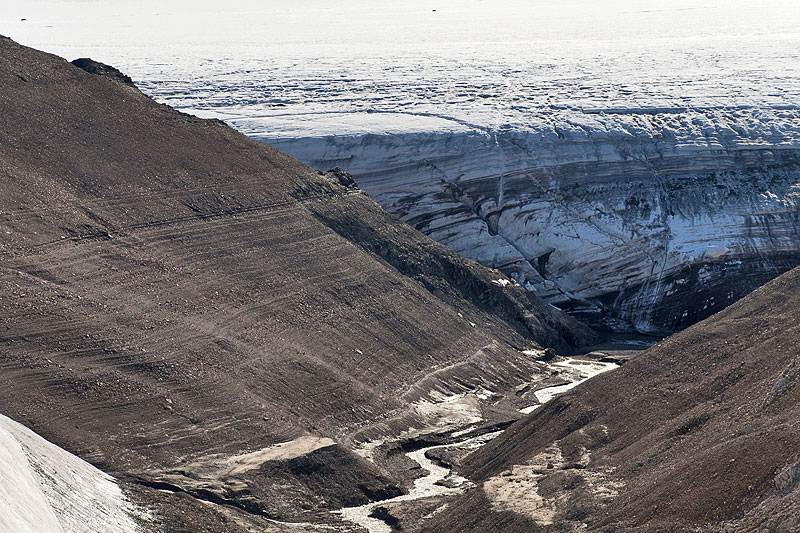 The drained ice-dammed lake basin, showing a series of lake shorelines. The lack of erosion of the shorelines suggests that the lake drained erratically earlier in the 2010 season (MH). | 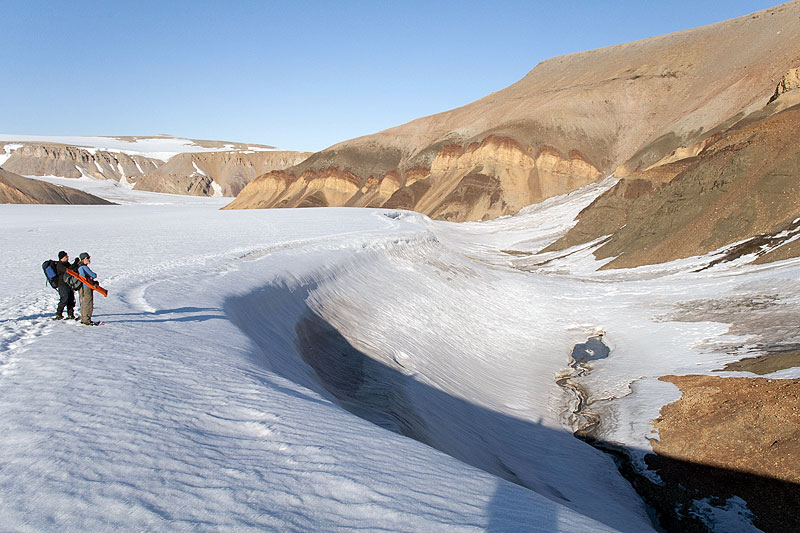 Large wind-scoop on the true-right margin of Blårevbreen, with Neoproterozoic glacial strata on the right (MH). |
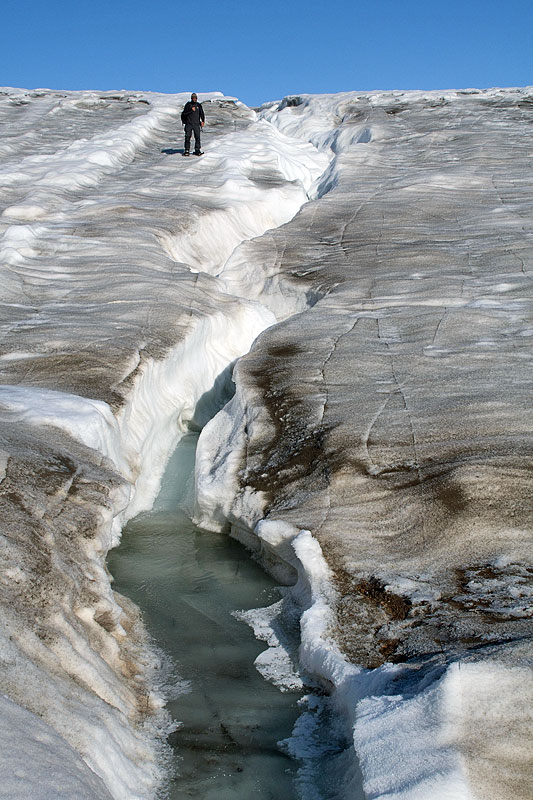 Supraglacial stream, running off the surface into the wind-scoop, and then following an ice-marginal position (MH). | 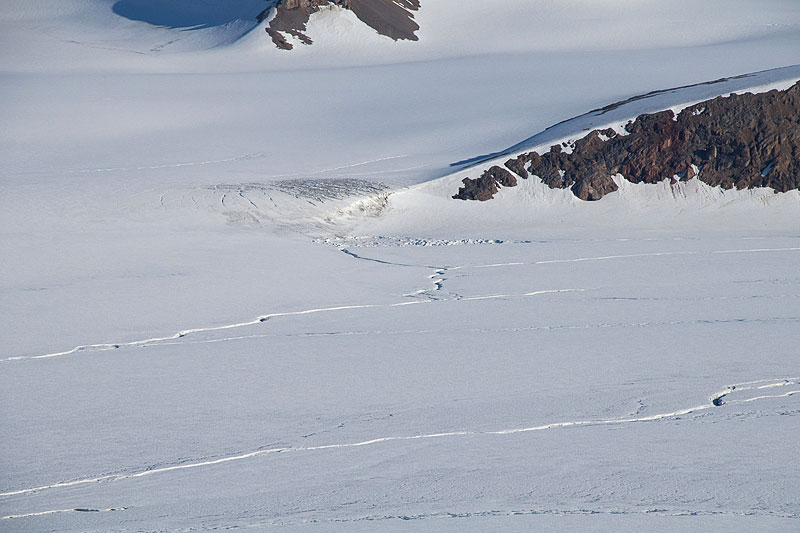 Large meltstreams flow down the middle of Oslobreen. Initially water-saturated snow becomes activated as slush flows, before the former channels are re-occupied (MH). | 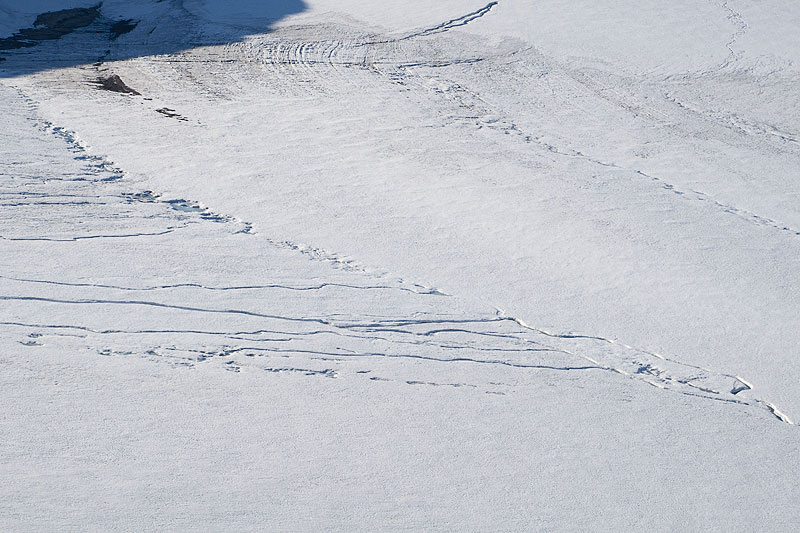 Telephoto of a series of small supraglacial streams incised into the snow cover on Blårevbreen (MH). | 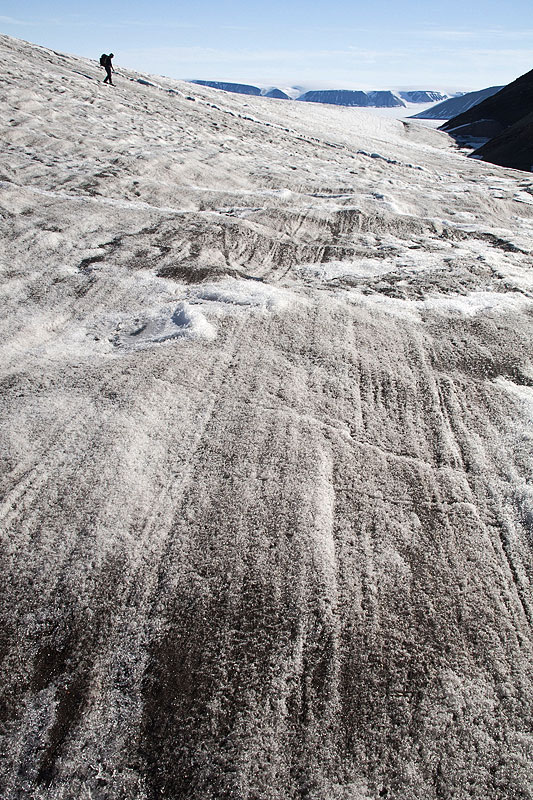 Strongly developed longitudinal foliation at the right-hand margin of Blårevbreen (MH). |
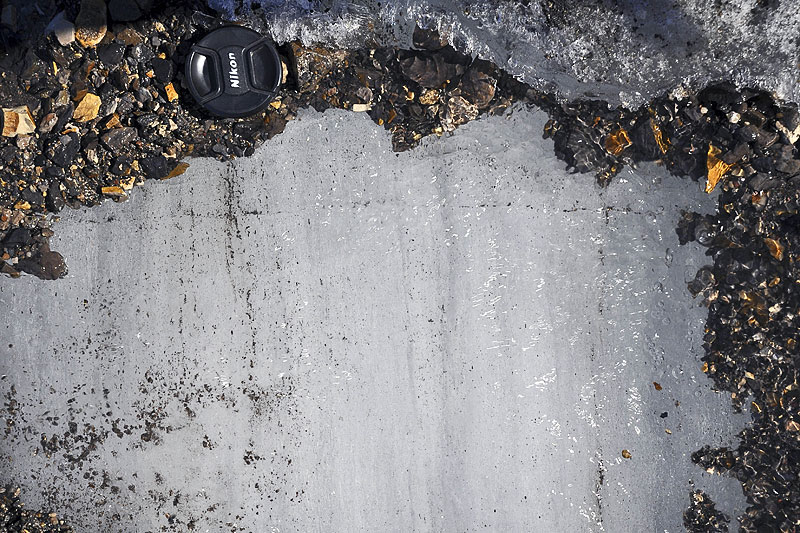 Washed fresh surface exposing detail of foliation on Blårevbreen, including coarse bubbly, coarse clear and fine-grained ice (MH). | 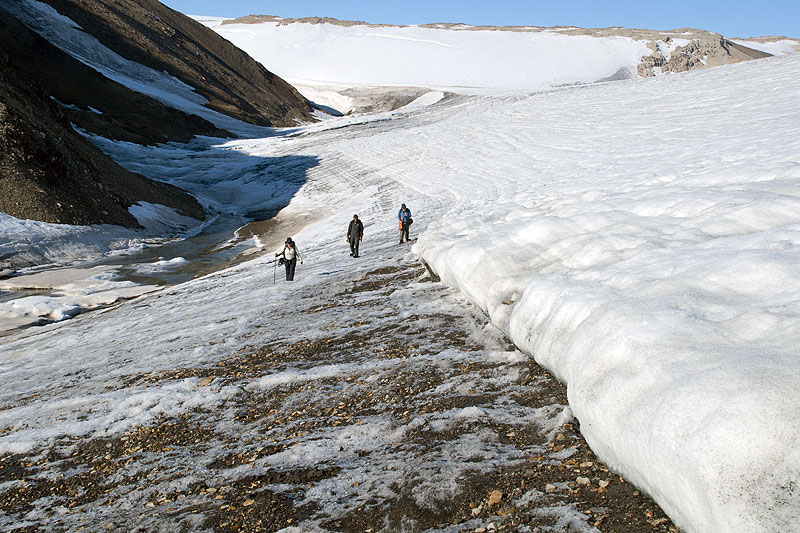 Ice-marginal low-angle thrust on Blårevbreen, associated with sediment of basal derivation (MH). | 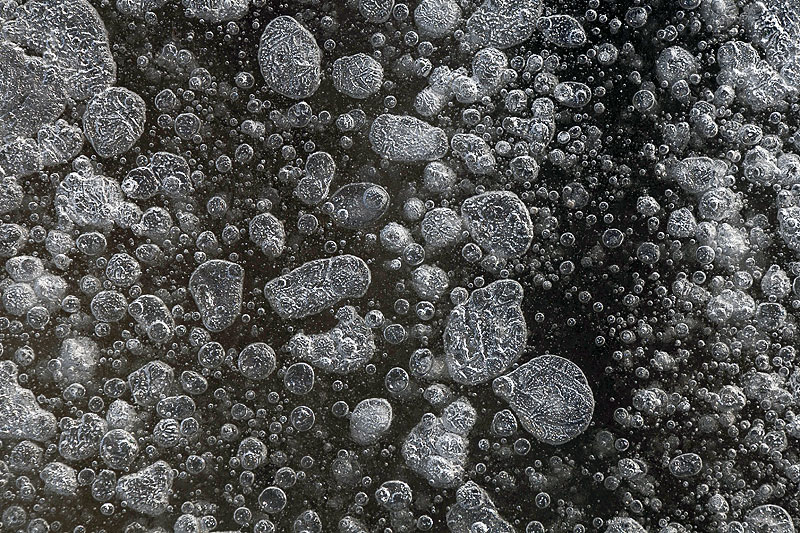 Trapped air bubbles beneath water-ice in a pond on Blårevbreen (MH). | 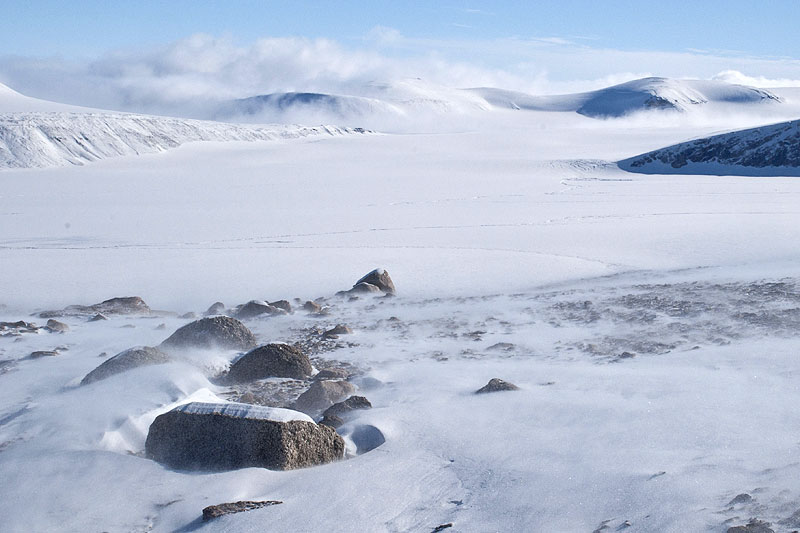 Tail-end of a blizzard, with still-drifting snow, with mid-Oslobreen in the background (MH). |
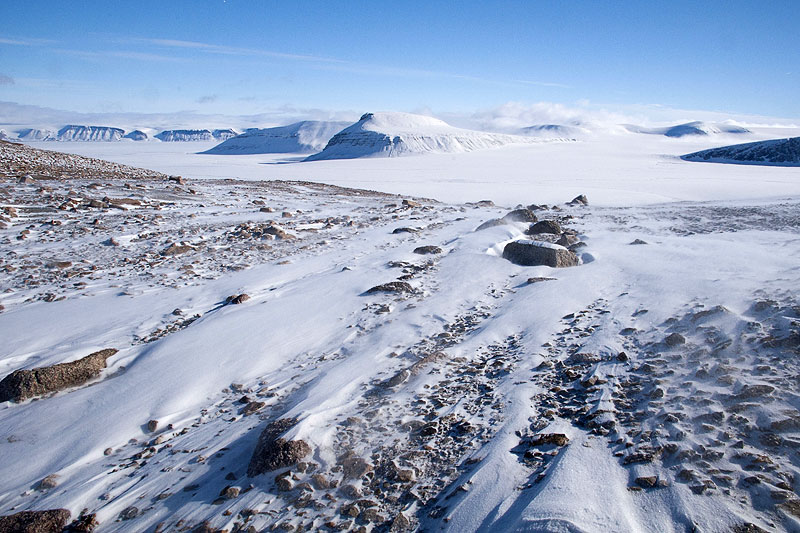 Long snow-drifts testify to the mobility of snow during a blizzard, with mid-Oslobreen in the background (MH). | 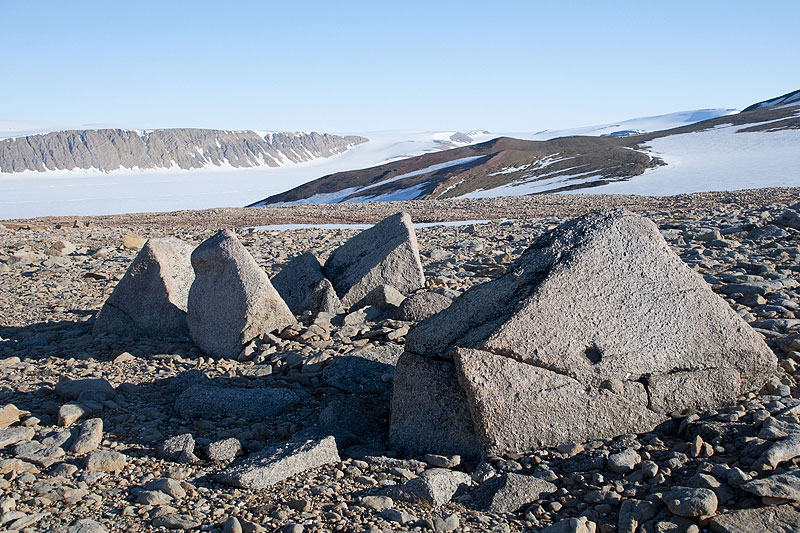 Cluster of Caledonian granite boulders, transported by ice from Newtontoppen area when the glaciers were much thicker (MH). | 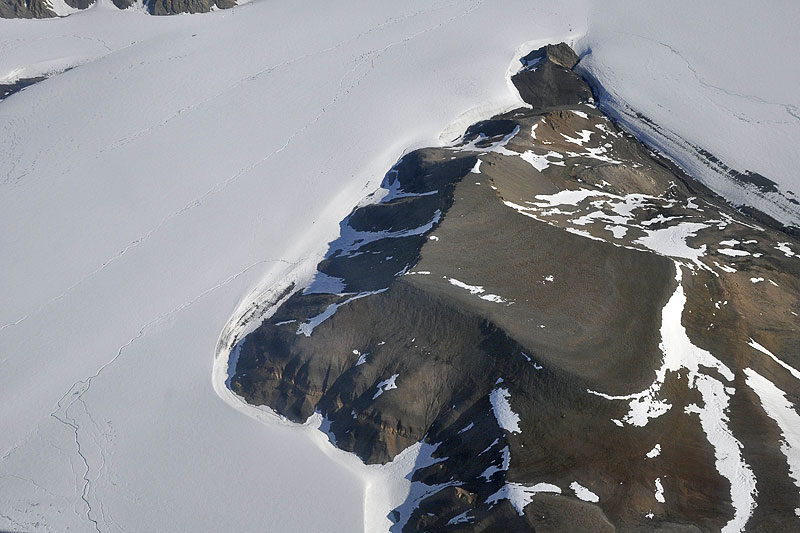 Aerial view of flat-topped Ditlovtoppen. The top half consists of near-horizontal Carboniferous strata, unconformably below which is the Neoproterozoic to Early Palaeozoic sequence (MH). | 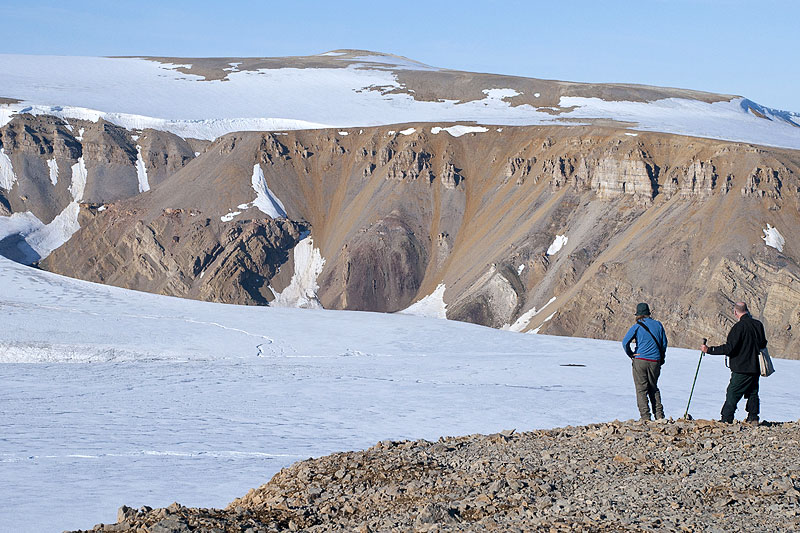 Geological reconnaissance on Ditlovtoppen, looking across Blårevbreen to the Caledonian unconformity, separating folded Neoproterozoic from horizontal Carbonifereous strata (MH). |
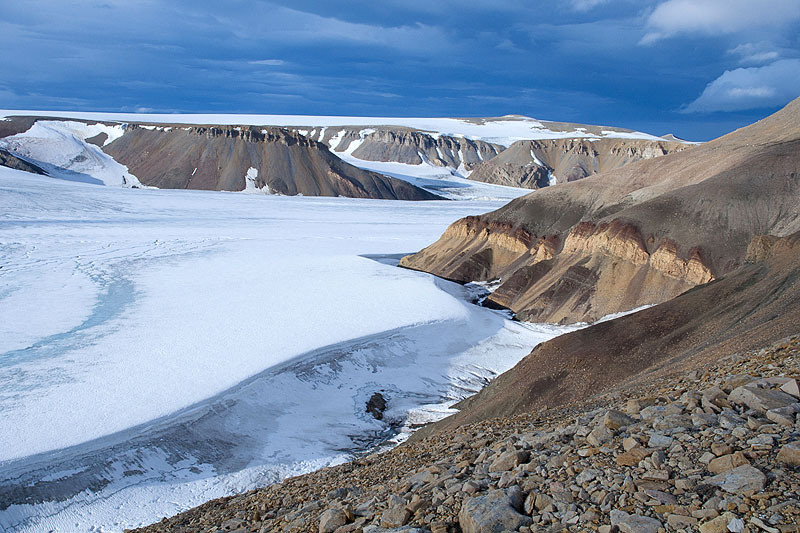 The principal section through the Neoproterozoic glacial sequence, along the right flank of Blårevbreen. The prominent yellow band is the globally significant “cap carbonate” (dolostone), below which lies the maroon and grey diamictites of the Wilsonbreen Formation that are interpreted as tillites - deposited by glaciers (MH). | 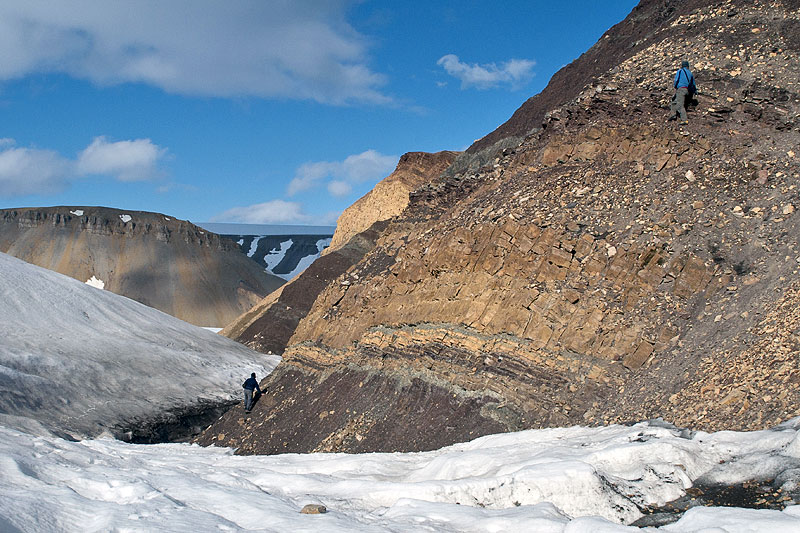 Adjacent to the glacier are excellent exposures of glacial sediments, deposited in a regime similar to that of modern Svalbard, but over 600 million years ago. The photo also shows pale-coloured well-bedded sediments that formed in an arid terrestrial to lacustrine setting, similar to modern-day Antarctica (MH). | 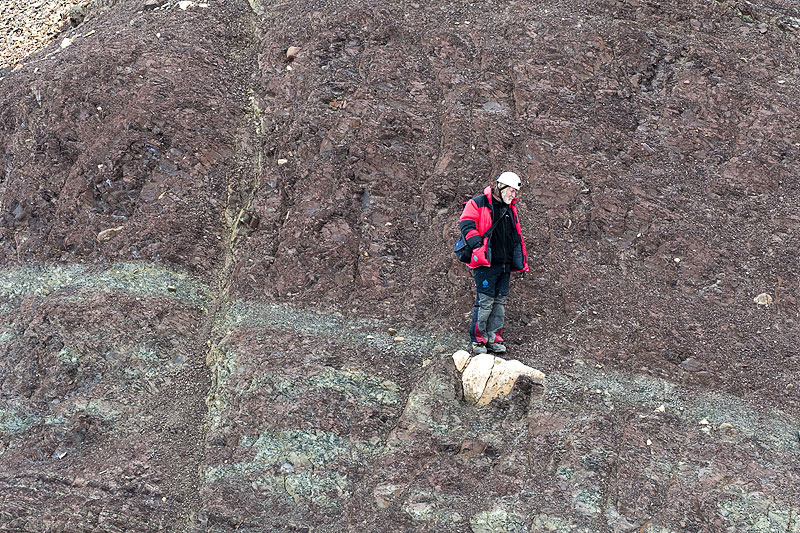 Exposed in the crumbly face of diamictite is this large planed-off dolostone boulder, one of several indicative of ice eroding and deforming its bed. Doug Benn for scale (MH). | 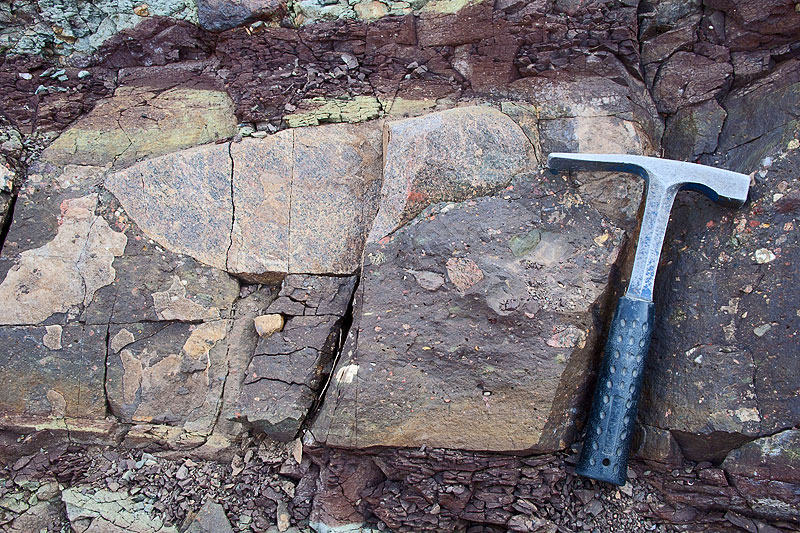 Granite and gneiss clasts in diamictite. These are common, but their source area is not represented in Svalbard today. It is likely that they originated from East Greenland when the two areas were joined together (MH). |
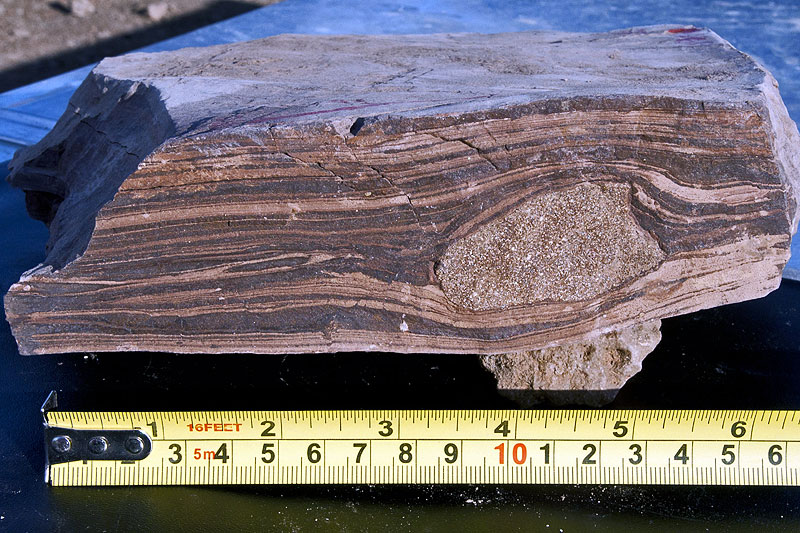 Laminated dolomitic sandstone with dropstone in the middle Wilsonbreen Formation, indicating ice-rafting into a lake. The matrix is strongly sheared from over-riding ice (MH). | 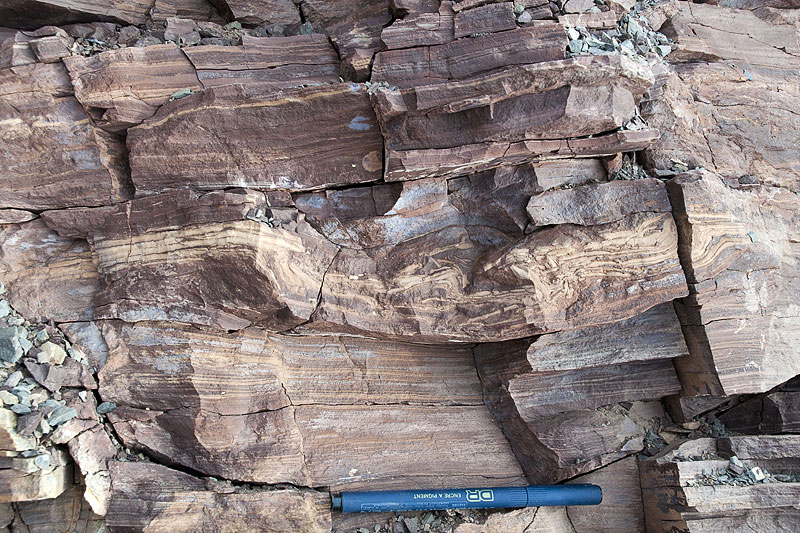 The laminated dolomitic siltstones are interpreted as having formed in a cold arid environment, similar to that in the Dry Valleys of Antarctica today. Here, the top of this unit has been strongly sheared, brecciated and folded by over-riding ice (i.e. the sediment was “glaciotectonised” before burial; MH). | 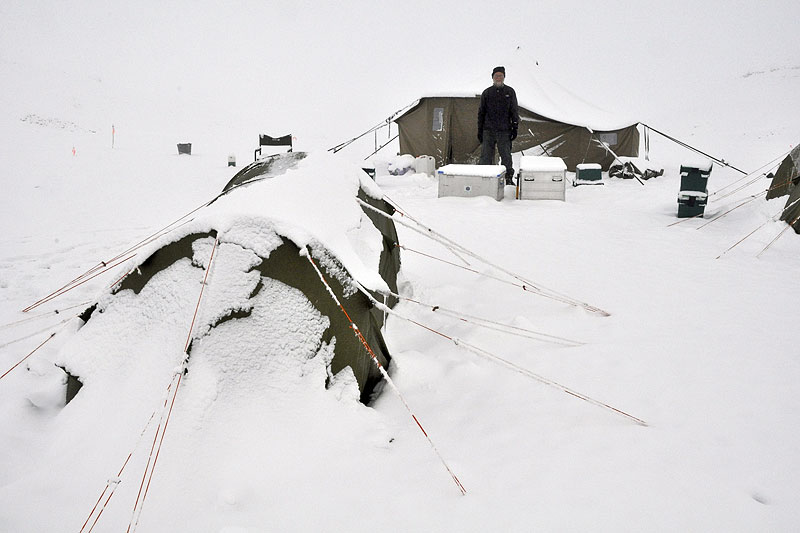 Although the field party was fortunate to experience generally good weather, heavy snow fell in mid-August, partly burying the camp, but which on the glaciers represented the first falls of the approaching winter (MH). | 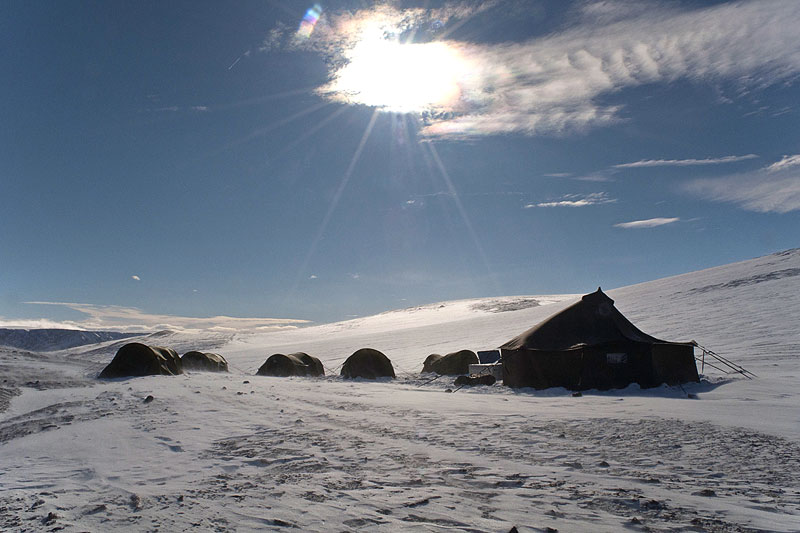 Following the snowfall, winds of gale force redistributed the snow, creating numerous drifts (MH). |
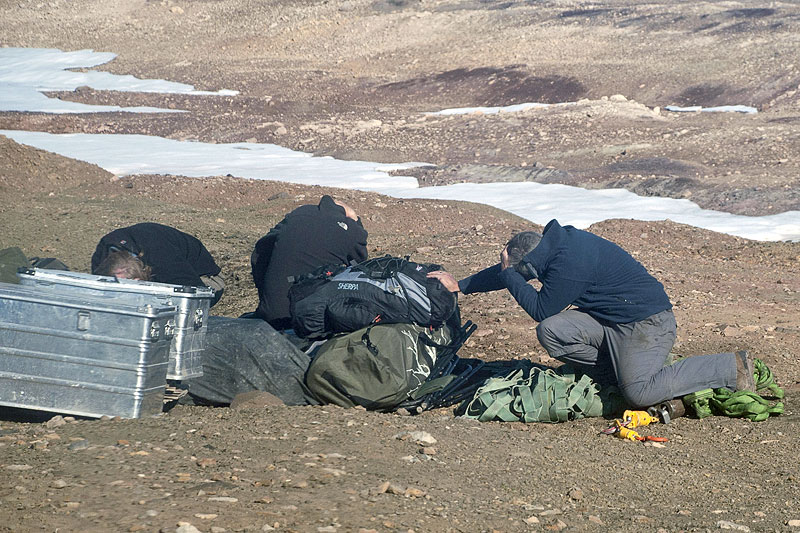 Helicopter transport involves rapid loading and evacuation of equipment, and, as here, stabilising our kit from turbulence of the rotor blades (MH). | 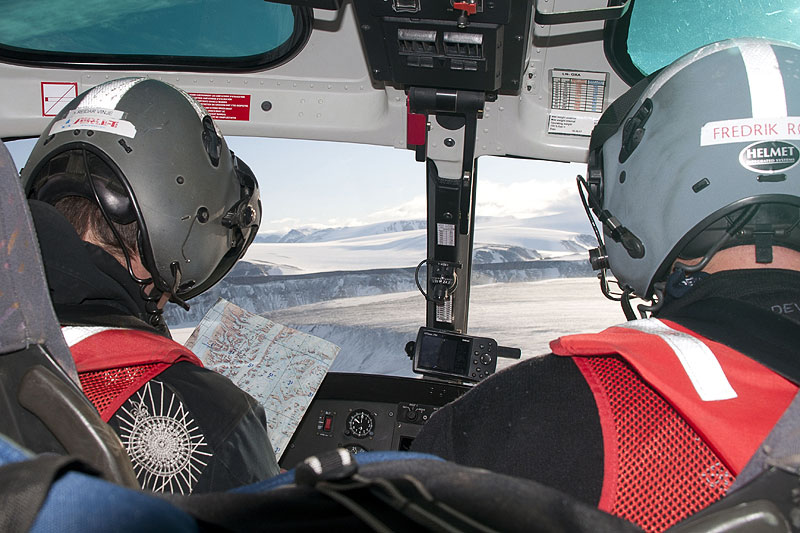 View over the pilots’ shoulders as we begin our flight across the icefields back to civilisation in Longyearbyen (MH). | | |
| The area was visited as part of a Birmingham University/University Centre in Svalbard/Aberystwyth University/New Mexico Highland University expedition to investigate the late Precambrian (formally Neoproterozoic) rock sequence. These strata have been cited as evidence for the controversial "Snowball Earth" theory, when the whole planet is envisaged to have been covered by ice. Oslobreen (as well as its companion, Polarisbreen) contains beautifully persevered geological sections, where the details of the palaeoenvironment can be effectively worked out. Particularly well preserved is the younger of two glacial formations, the Wilsonbreen, exposed along the flanks of Blårevbreen. |